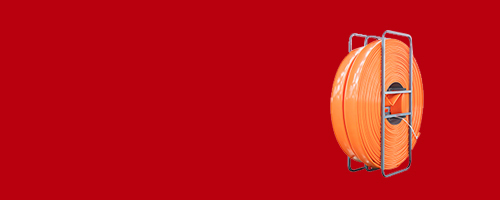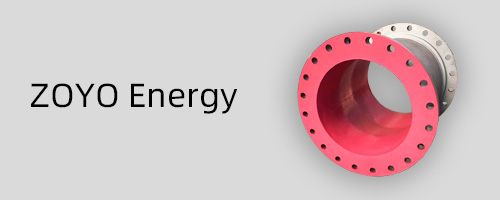
Choosing the Right Oil Transfer Hose: A Simple Guide
2025-11-03 14:00
The humble oil transfer hose is one of those pieces of equipment that’s easy to take for granted. It looks like a simple tube, and its job seems straightforward: move oil from point A to point B. Yet, this apparent simplicity is deceptive. Choosing the wrong hose for your application isn't just a minor mistake; it can lead to costly downtime, significant product loss, severe safety hazards, and environmental damage. With so many options on the market, how do you make the right choice without getting lost in technical jargon?
At ZYfire Hose Corporation, we believe that an informed customer is a safe and efficient customer. This guide cuts through the complexity to provide a clear, simple, and actionable roadmap for selecting the perfect oil transfer hose for your specific needs. We'll explore the key factors you need to consider, demystify common industry terms, and explain how our commitment to excellence at ZYfire ensures you get a product you can rely on, day in and day out.
Why the "Right" Hose Matters More Than You Think
It's tempting to think that a hose is just a hose. The reality is far different. Using an inappropriate hose is like using the wrong tool for a job—you might make it work initially, but the consequences can be disastrous.
1. Material Compatibility: The First and Most Critical Step
Not all oils are the same, and not all hose materials are compatible with every type of oil. Using a hose made with an incompatible synthetic rubber or thermoplastic can lead to a catastrophic failure.
Swelling and Degradation: Certain oils and additives can cause the inner tube of a hose to soften, swell, or crack. A swollen hose can weaken, reduce flow, and eventually burst. A cracked hose will leak from the start.
Permeation: Some lighter hydrocarbon-based fluids can actually permeate through the hose wall. This leads to weight loss, fluid loss, and a dangerous buildup of fumes outside the hose.
The ZYfire Solution: Our hoses are engineered with specific, high-quality polymer compounds designed for maximum resistance to a wide range of petroleum-based oils, including diesel, gasoline, hydraulic oil, and crude oil. We provide clear compatibility charts and expert consultation to ensure you never have to guess.
2. Pressure Ratings: Not All Hoses Are Created Equal
Every hose has a maximum working pressure rating. Exceeding this rating, even briefly, can cause the hose to rupture violently.
Understanding Working Pressure vs. Burst Pressure: The working pressure is the maximum continuous pressure the hose is designed to handle safely. The burst pressure is the point at which it will fail, typically four times the working pressure. You must always select a hose with a working pressure that exceeds the maximum pressure your system will generate, including pressure spikes.
Safety Factor: A high safety factor (the ratio of burst to working pressure) is non-negotiable for protecting personnel and equipment.
The ZYfire Solution: All ZYfire oil transfer hoses are rigorously tested to exceed industry standards for both working and burst pressure. We clearly label our hoses and provide detailed technical data sheets, so you can be confident in their capabilities.
3. Temperature Range: Handling the Heat and the Cold
Environmental and operational temperatures play a huge role in hose performance and lifespan.
Heat Effects: High temperatures can cause rubber to harden and become brittle over time, losing its flexibility and crack resistance. It can also degrade the hose's pressure capability.
Cold Effects: Extreme cold can make some hoses stiff and inflexible, making them difficult to handle and more prone to kinking and damage. In some cases, the material can become brittle and crack.
The ZYfire Solution: We formulate our materials to perform across a wide operational temperature range. Whether you're working in the scorching sun of a desert construction site or the freezing dawn of a northern winter, a ZYfire hose will remain flexible, durable, and safe.
4. Construction and Reinforcement: The Hidden Strength
The outer cover is what you see, but the real strength lies in the reinforcement layer. This is what contains the pressure.
Textile vs. Steel Reinforcement: Light-duty hoses may use textile braid, suitable for lower-pressure transfer. Medium- and high-pressure applications require spiral or braided steel wire reinforcement. This steel layer provides immense strength while maintaining flexibility.
The ZYfire Solution: We use high-tensile steel wire, precisely braided or spiraled to create a robust skeleton for our hoses. This construction ensures high pressure capacity, excellent kink resistance, and superior impulse durability (resistance to pressure surges).
Beyond the Spec Sheet: The ZYfire Hose Corporation Difference
While technical specifications are crucial, true quality and safety are born from a company's philosophy and manufacturing ethos. This is where ZYfire Hose Corporation stands apart. Our approach is built on the principles of E-E-A-T (Experience, Expertise, Authoritativeness, and Trustworthiness), ensuring you get more than just a product; you get a reliable partner.
Experience: Proven in the Field
ZYfire hoses aren't just designed in a lab; they are proven on job sites around the world. Our engineers have decades of collective experience in the fluid transfer industry. We understand the real-world challenges our customers face—the rough terrain, the abrasive surfaces, the constant coupling and uncoupling, and the critical need for reliability. This practical experience directly informs our design and manufacturing processes, leading to hoses that are not only high-performing but also exceptionally durable and user-friendly.
Expertise: Deep Technical Knowledge
Our team comprises material scientists, mechanical engineers, and application specialists. We don't just follow industry standards; we often exceed them. We invest heavily in Research and Development to explore new polymer compounds and reinforcement techniques. This deep expertise allows us to offer innovative solutions, such as our proprietary abrasion-resistant covers and static-wire dissipative constructions that prevent dangerous sparking. When you talk to a ZYfire representative, you're tapping into a well of knowledge dedicated to solving your specific fluid transfer challenges.
Authoritativeness: A Recognized Leader
ZYfire Hose Corporation is a recognized authority in the hose manufacturing sector. Our technical white papers are referenced in industry publications, and our products are certified by leading international standards organizations. We actively contribute to setting industry benchmarks for safety and performance. This authoritativeness means you can trust that the information we provide and the products we sell represent the current best practices in oil transfer technology.
Trustworthiness: Built on Integrity and Transparency
Trust is the cornerstone of our business. We build it through:
Quality Assurance: Every batch of raw materials is inspected, and every meter of finished hose undergoes stringent quality checks before it leaves our factory.
Transparent Communication: We are clear about our products' capabilities and limitations. Our documentation is thorough and easy to understand.
Customer-Centric Support: Our service doesn't end with a sale. Our technical support team is available to help with installation queries, compatibility questions, and troubleshooting, ensuring you get the most out of your ZYfire hose for years to come.
A Simple Checklist for Your Next Hose Purchase
To bring it all together, here is a straightforward checklist to guide your purchasing decision:
Identify the Fluid: What specific type of oil are you transferring? (e.g., diesel, gasoline, hydraulic oil).
Check Compatibility: Confirm the hose material is certified for use with that fluid.
Determine Pressure Needs: Know your system's maximum working pressure and select a hose with a higher rating.
Assess Temperature Exposure: What are the minimum and maximum ambient and fluid temperatures?
Consider the Environment: Will the hose be dragged over rough ground? Exposed to sunlight, chemicals, or abrasion? Choose a hose with a cover suited to those conditions.
Select the Correct Size: Ensure the inner diameter (ID) is appropriate for your desired flow rate.
Choose the Right Couplings: Select end fittings that are compatible with your equipment and securely attached to the hose.
Verify the Manufacturer's Reputation: Choose a trusted manufacturer like ZYfire Hose Corporation that stands behind its products with clear warranties and reliable customer support.
Conclusion: Don't Gamble with Your Operations
Selecting an oil transfer hose is a critical decision that impacts operational efficiency, workplace safety, and environmental stewardship. By moving beyond a "one-size-fits-all" mentality and following a informed, deliberate selection process, you can avoid the high costs of failure.
At ZYfire Hose Corporation, we have simplified this process by engineering hoses that embody safety, durability, and performance. We combine cutting-edge materials with robust construction and back it all with unparalleled expertise and a commitment to your success. When you choose a ZYfire hose, you aren't just buying a piece of equipment; you are investing in peace of mind.
Don't let the simplicity of a hose fool you. Make the right choice. Choose ZYfire.
Get the latest price? We'll respond as soon as possible(within 12 hours)









